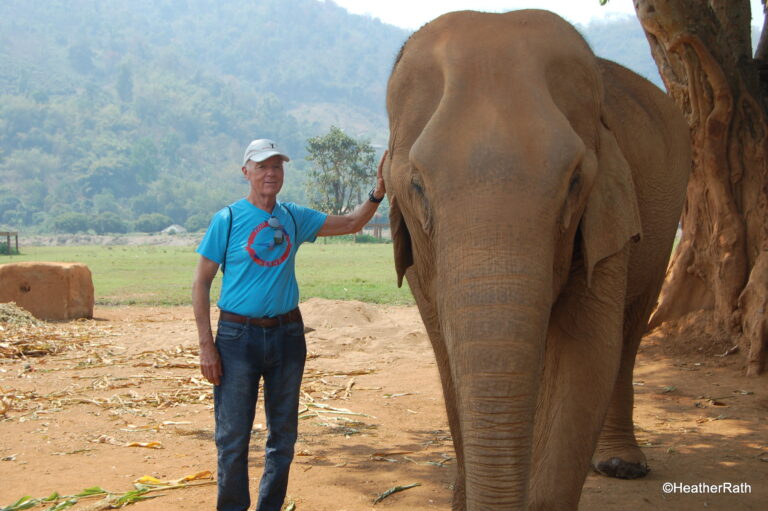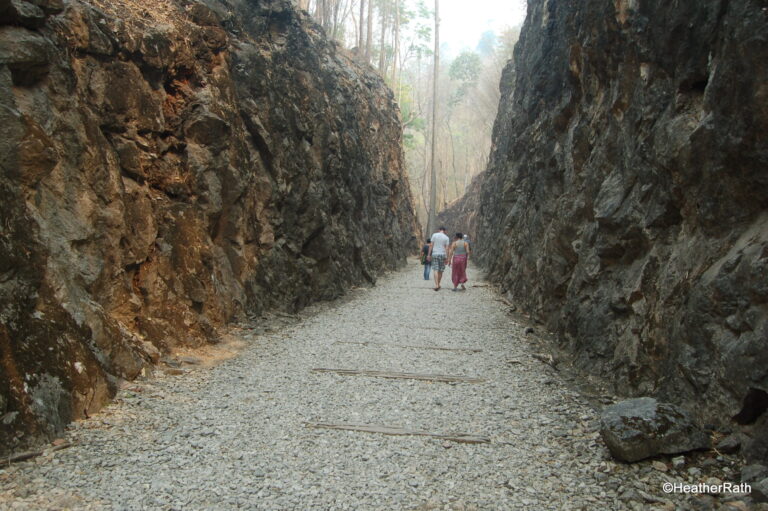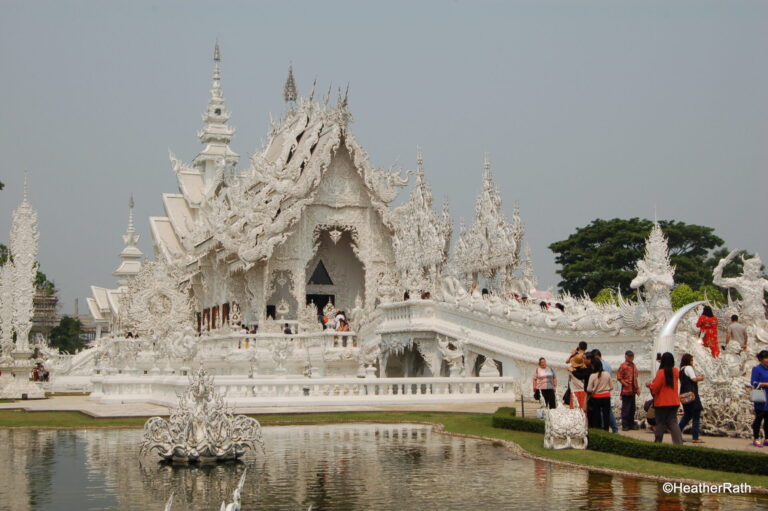The Elusive Elephant

“Come ‘ere! Come ‘ere!”
One of our tour companions waves excitedly. Points. We rush to where he’s standing. Hopeful.
“Right there! See them trees moving! Right there!”
Squint into the bush. Shade eyes from scorching sun. Nothing.
“Aw. Gone now.”
“See anything?” I ask.
“Naw,” he confesses. “Just moving leaves. Had to be an elephant.”
Sure, I think with skepticism. This guy probably sees Casper the Friendly Ghost rising out of a pumpkin patch on Hallowe’en.
We’re on a wild elephant safari into the Thai jungle at Kuiburi National Park. Chose this tour because there was a chance we might actually see elephants in their natural habitat. After researching these majestic mammals, we decide this is the way to go even though we are warned we may not see any. Luck and being in the right place at the right time is our mantra.
“Twice as many elephants work in Thailand’s tourism industry as the rest of Asia combined, with the vast majority kept in severely inadequate conditions….When not giving rides or performing, the elephants were typically chained day and night, most of the time to chains less than three meters long. They were also fed poor diets, given limited appropriate veterinary care and were frequently kept on concrete floors in stressful locations.” World Animal Protection (WAP) report
At our next jungle stop, our group of 8 jumps off, scans the horizon in anticipation. We are on a plateau overlooking a large treed valley. Suddenly a flock of white egrets erupts from distant tree tops. We do know there is a symbiotic relationship between egrets and elephants. Egrets get a free ride and meal from insects the elephant kicks up as he moves across the jungle floor. In return, the egret feeds on parasites living on the elephant. We mention this quietly to our hyper tour friend.
“Elephants!” he suddenly screams to everyone. “Those white birds mean elephants!”
Not necessarily but possibly. The white birds we spy are far in the distance. Trying to spot an elephant in a treed jungle from our lofty vantage point is impossible. Our motormouth friend has stirred up a hopeless hope.
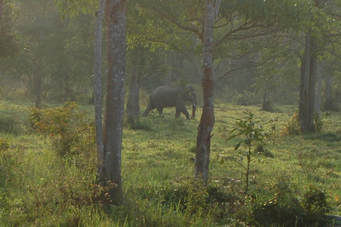
We mutter: “this is the afternoon. Animals and birds are usually active in the early morning or evening. Any elephant is probably resting in the shade out of the hot sun like any sensible creature.”
And so, as the afternoon wears on, our hopes diminish for seeing an elephant in the wild. But we continue to wait. And look. Scour the landscape. Walk back and forth across the cliff top.
Close to twilight now. Park closes at 6 p.m.; insects already feasting on unprotected tourist flesh. Reluctantly we climb aboard the back of our safari truck. Slowly the driver retraces our rough and muddy route.
“Stop!” orders a half whispering, half shouting guide with skillfully trained eyes. Points into the jungle to her right. Sun beginning to set. Rays act like an illuminating backdrop.
Scanning eyes, cameras ready, silence. Ignore bug bites.
Guide points again. Straining eyes catch a large, round gray mound amidst trees in the distance. It moves!
Yes! See him! See his tusks! About 100 metres! Chomping on leaves! Ambling through his natural habitat! Unaware of spying human eyes!
Cameras click in unison.
“Madame,” cautions the guide respectfully. “No flash please!”
Damn my camera!
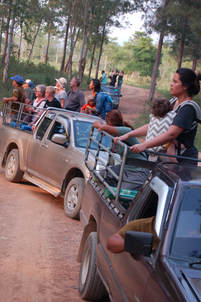
Group stands in back of panel truck. Mesmerized. Watch every move Babar the Elephant makes as he slowly, languidly, eats his way through the foliage, ambling across our muddy trail in full view about 80 metres behind us. Then he blissfully wanders into the bush, disappears from view.
Giddy. Thrilled. Worth the heat, bugs, discomfort, mouthy tour companion.
The elusive elephant.
https://www.heatherrath.net/blog/motorbikes-yikes
Motorbikes—-Yikes!
A sinister looking stranger—streaked with black dirt, smeared with black asphalt— loomed over my sunbathing body on this Greek Island beach. He cast a shadow, forcing me to open my…

